Lesson 4Square Roots on the Number Line
Let’s explore square roots.
Learning Targets:
- I can find a decimal approximation for square roots.
- I can plot square roots on the number line.
4.1 Diagonals
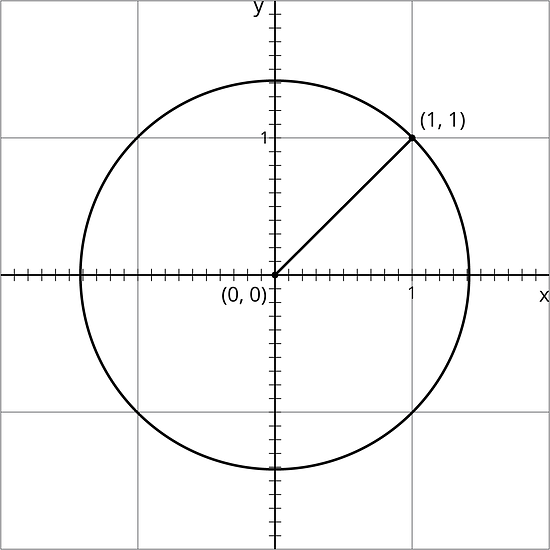
- What is the exact length of the line segment?
-
Find a decimal approximation of the length.
4.2 Squaring Lines
- Estimate the length of the line segment to the nearest tenth of a unit (each grid square is 1 square unit).

-
Find the exact length of the segment.
4.3 Square Root of 3
Diego said that he thinks that .
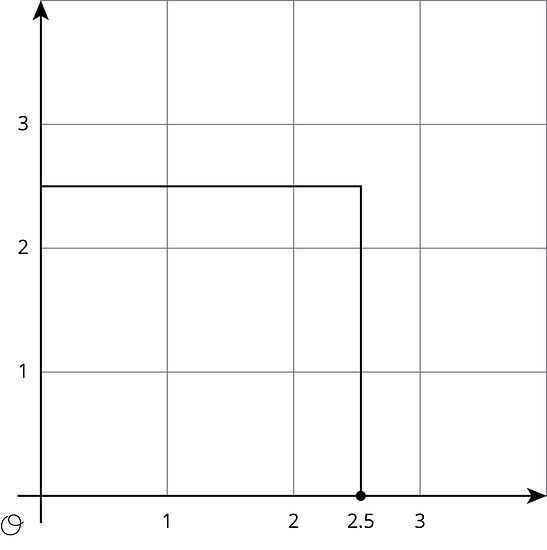
- Use the square to explain why 2.5 is not a very good approximation for . Find a point on the number line that is closer to . Draw a new square on the axes and use it to explain how you know the point you plotted is a good approximation for .
-
Use the fact that is a solution to the equation to find a decimal approximation of whose square is between 2.9 and 3.1.
Are you ready for more?
A farmer has a grassy patch of land enclosed by a fence in the shape of a square with a side length of 4 meters. To make it a suitable home for some animals, the farmer would like to carve out a smaller square to be filled with water, as in the figure.
What should the side length of the smaller square be so that half of the area is grass and half is water?

Lesson 4 Summary
Here is a line segment on a grid. What is the length of this line segment?
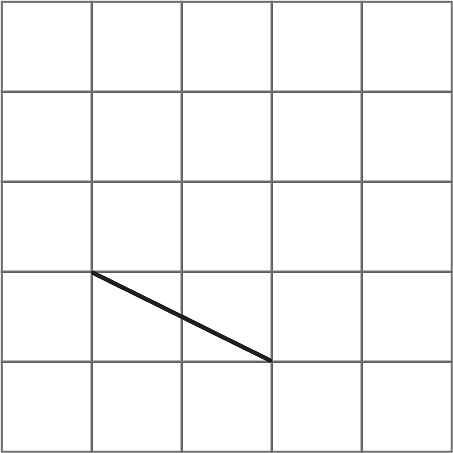
By drawing some circles, we can tell that it’s longer than 2 units, but shorter than 3 units.
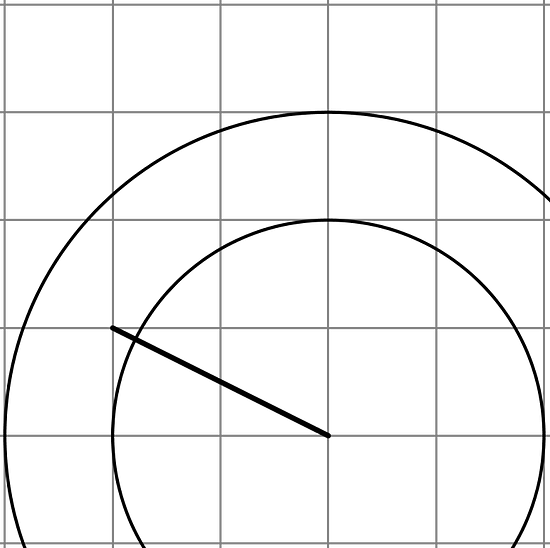
To find an exact value for the length of the segment, we can build a square on it, using the segment as one of the sides of the square.
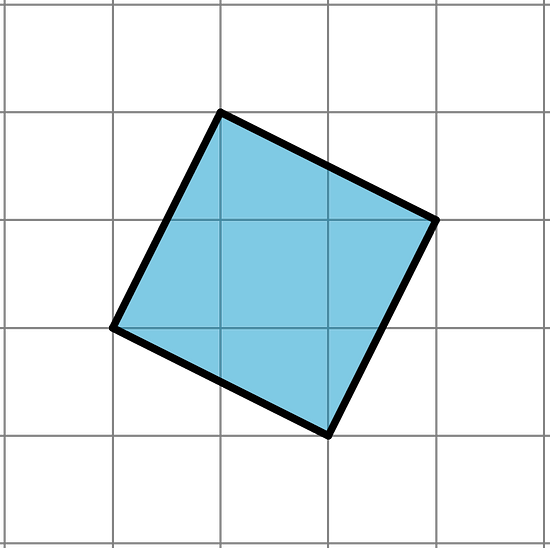
The area of this square is 5 square units. (Can you see why?) That means the exact value of the length of its side is units.
Notice that 5 is greater than 4, but less than 9. That means that is greater than 2, but less than 3. This makes sense because we already saw that the length of the segment is in between 2 and 3.
With some arithmetic, we can get an even more precise idea of where is on the number line. The image with the circles shows that is closer to 2 than 3, so let’s find the value of 2.12 and 2.22 and see how close they are to 5. It turns out that and , so we need to try a larger number. If we increase our search by a tenth, we find that . This means that is greater than 2.2, but less than 2.3. If we wanted to keep going, we could try and eventually narrow the value of to the hundredths place. Calculators do this same process to many decimal places, giving an approximation like . Even though this is a lot of decimal places, it is still not exact because is irrational.
Lesson 4 Practice Problems
- Find the exact length of each line segment.
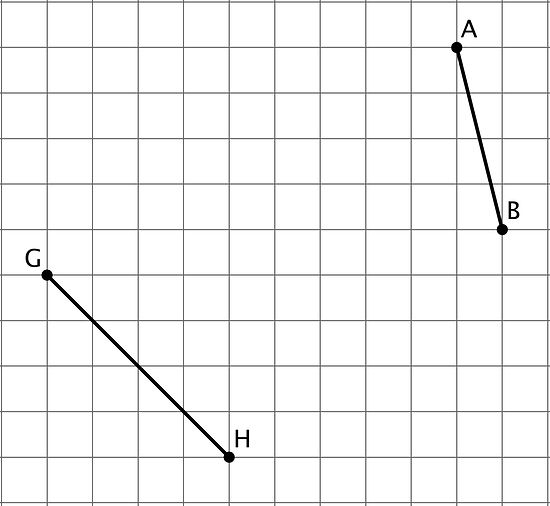
- Estimate the length of each line segment to the nearest tenth of a unit. Explain your reasoning.
- Find the exact length of each line segment.
Plot each number on the -axis: . Consider using the grid to help.
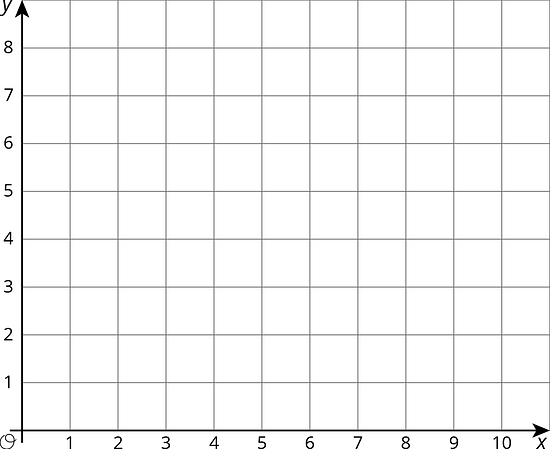
Use the fact that is a solution to the equation to find a decimal approximation of whose square is between 6.9 and 7.1.
Graphite is made up of layers of graphene. Each layer of graphene is about 200 picometers, or meters, thick. How many layers of graphene are there in a 1.6-mm-thick piece of graphite? Express your answer in scientific notation.
Here is a scatter plot that shows the number of assists and points for a group of hockey players. The model, represented by , is graphed with the scatter plot.
- What does the slope mean in this situation?
- Based on the model, how many points will a player have if he has 30 assists?
The points and lie on a line. What is the slope of the line?